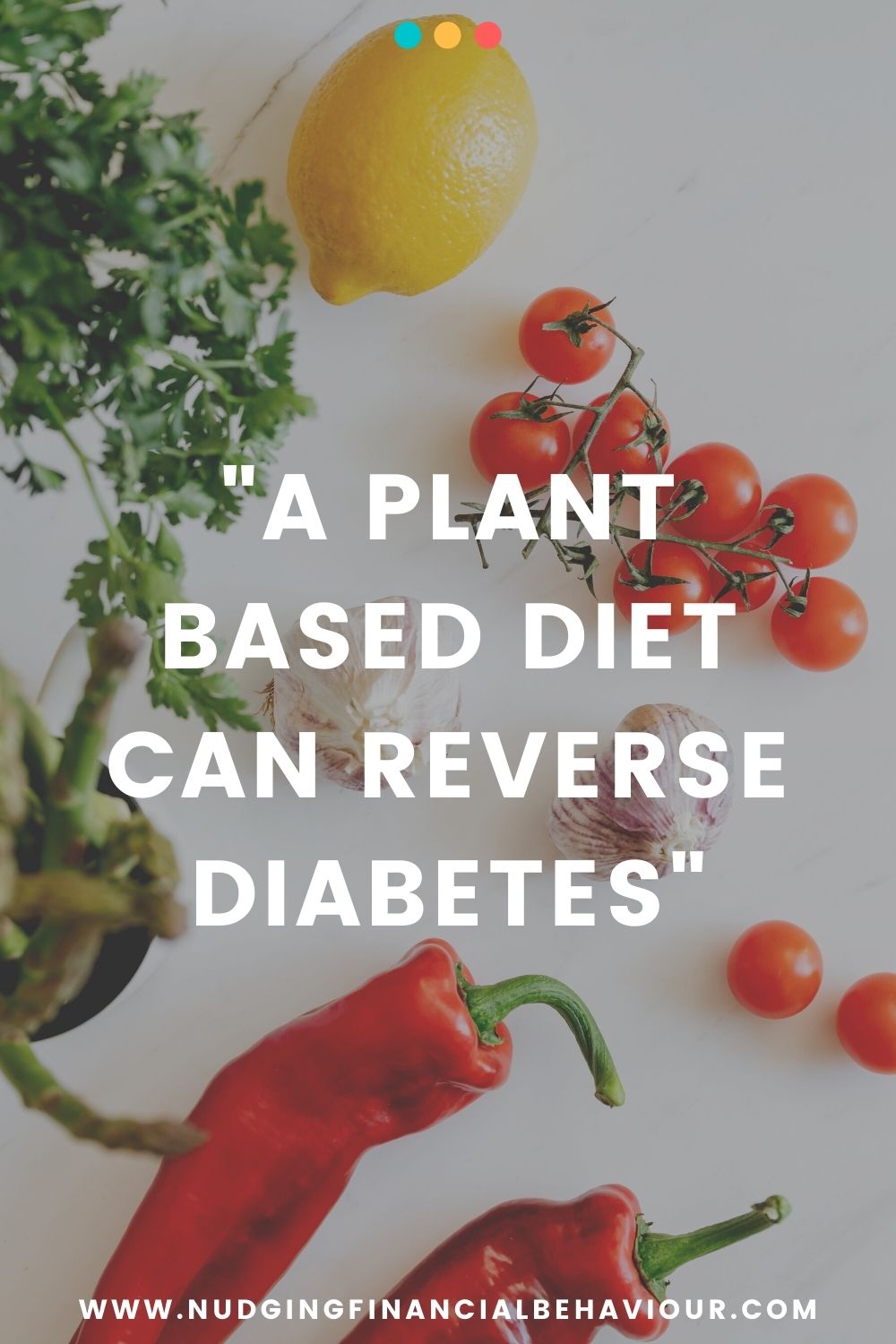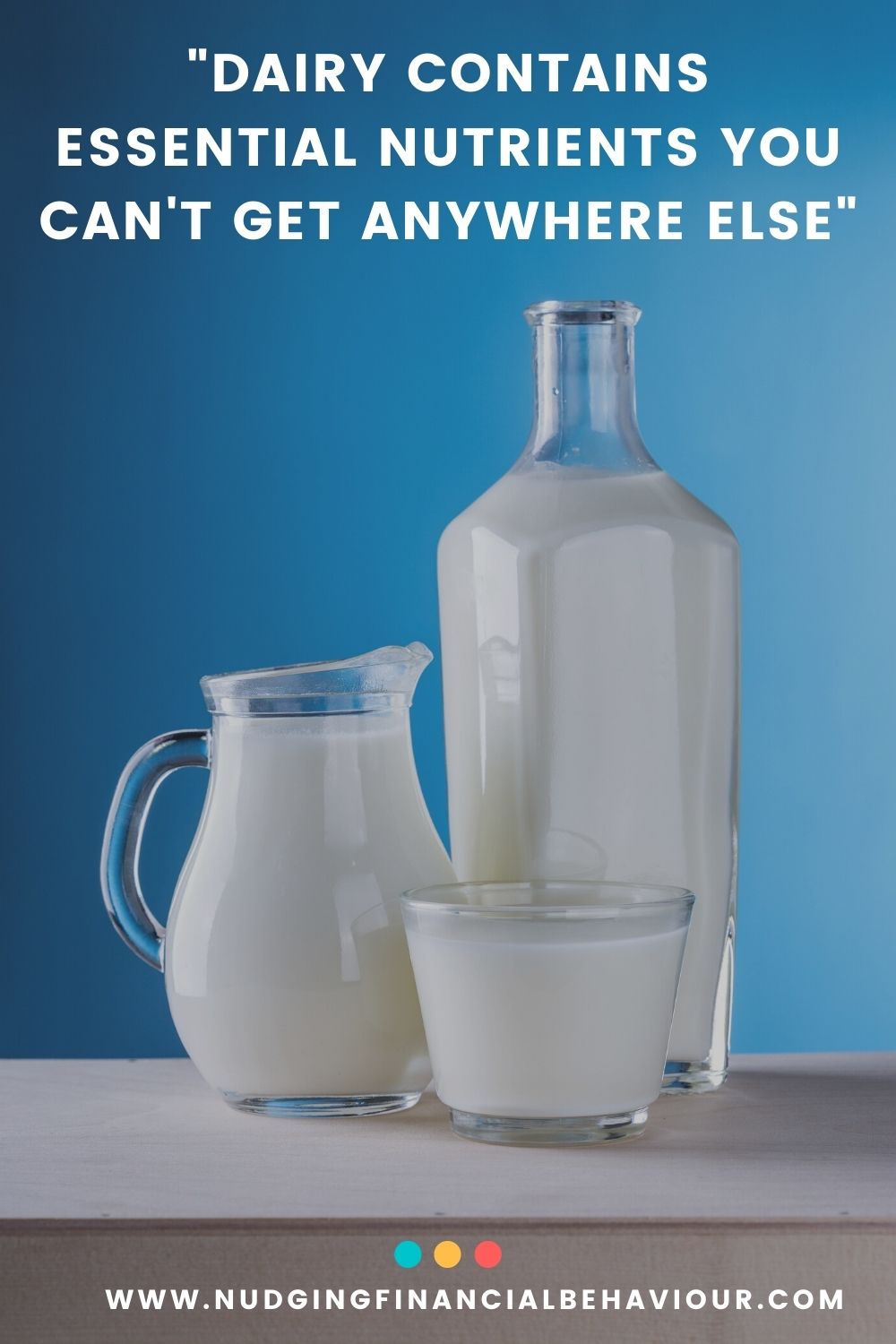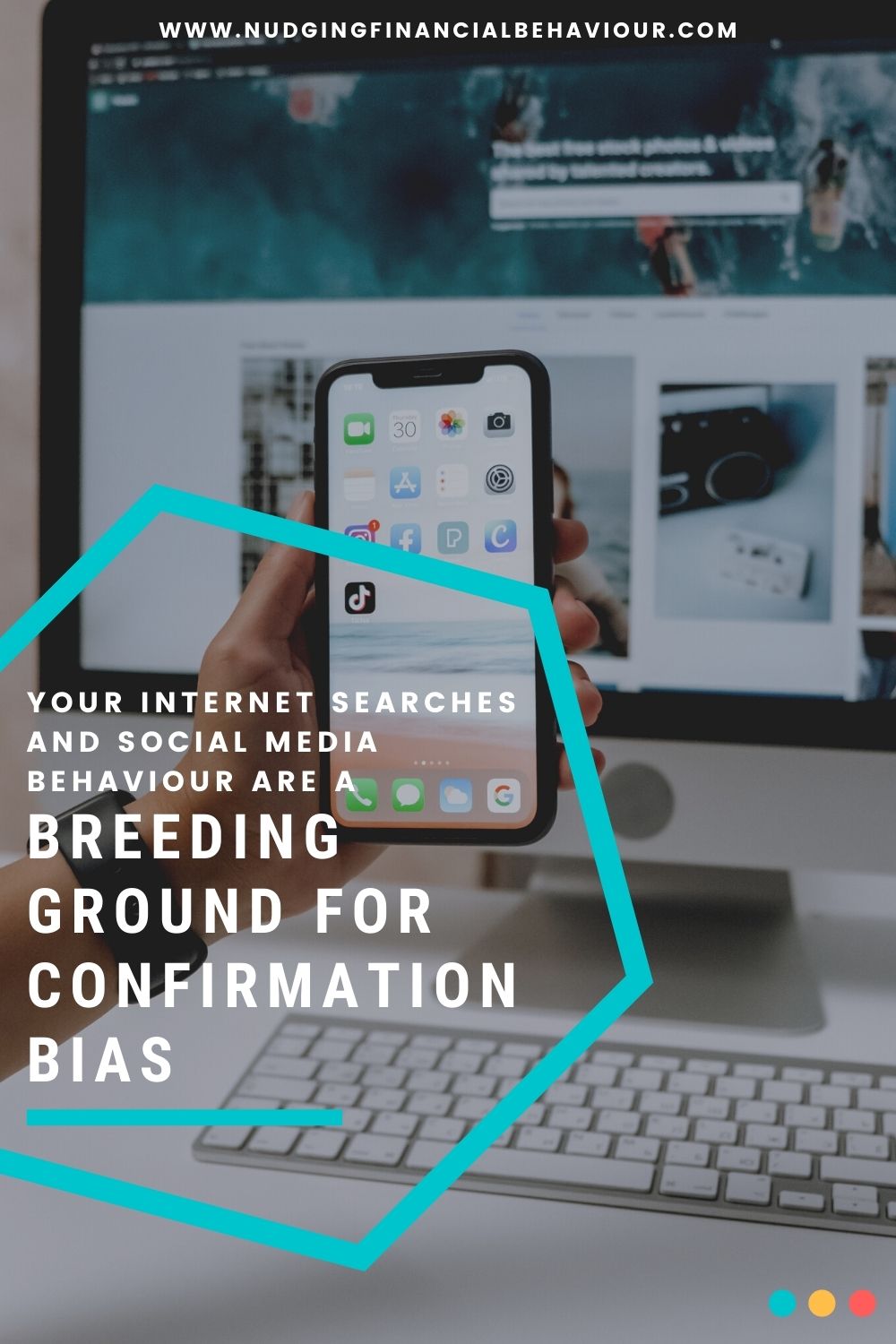This post focuses on how confirmation bias affects our decision making. Confirmation bias fallacy is one of those psychological biases that you can see everywhere. Similar to cognitive dissonance. We all suffer from it. It’s both humorous and serious. But because of that, it’s useful to know how to avoid confirmation bias.
If you’re wondering ‘ what is a bias ‘ or ‘ what is cognitive bias ‘, the bias psychology definition refers to our tendency to make decisions or take actions in an unknowingly irrational way. The cognitive bias definition is when we make systematic errors as a result of our heuristics (i.e. shortcuts) in decision making. Biases examples are everywhere. But we’re working through the list of cognitive biases one-by-one in this series.
For this post, we’re focusing on confirmation bias fallacy examples and other cognitive bias examples related to it. Specifically, we’ll also touch on cognitive dissonance theory. To end, there’s a challenge (as always). Or rather, just some tips on how to avoid confirmation bias psychology.
Confirmation bias fallacy is a bias in psychology which refers to how we tend to only seek out and listen to information that confirms the opinion we already hold, and we tend to avoid any evidence that might be contradictory to our opinion. That’s the definition of confirmation bias in a sentence. It is the mother of most misconceptions and a dangerous practice.
Here is an example of confirmation bias: you’re a Vegan, therefore you believe that a plant-based diet is the way to go. If I had to open your Instagram feed, I’ll probably see that you follow a lot of other vegans or plant-based influencers. You probably frequent a lot of the vegan pop-ups and when you see an article that mentions anything along the lines of “A plant-based diet can reverse diabetes”, or “ Eating meat will kill you’, you’ll probably read it. What are you doing? You are taking in and subscribing to information about something that will most likely confirm what you already believe. You feel comfortable reading those pieces of information that confirm your existing beliefs about something and seeing other people promote a lifestyle that you’re familiar with. Contrary to this, if you see or hear anything that says, “Soy is bad” or “Dairy contains essential nutrients you can’t get anywhere else”, even if the source is a medically reviewed journal, you’ll probably ignore it. Why? Because you’ve already made up your mind that it’s wrong.


Confirmation bias fallacy is a bias in psychology which refers to how we tend to only seek out and listen to information that confirms the opinion we already hold, and we tend to avoid any evidence that might be contradictory to our opinion. That’s the definition of confirmation bias in a sentence. It is the mother of most misconceptions and a dangerous practice.
Here is an example of confirmation bias: you’re a Vegan, therefore you believe that a plant-based diet is the way to go. If I had to open your Instagram feed, I’ll probably see that you follow a lot of other vegans or plant-based influencers. You probably frequent a lot of the vegan pop-ups and when you see an article that mentions anything along the lines of “A plant-based diet can reverse diabetes”, or “ Eating meat will kill you’, you’ll probably read it. What are you doing? You are taking in and subscribing to information about something that will most likely confirm what you already believe. You feel comfortable reading those pieces of information that confirm your existing beliefs about something and seeing other people promote a lifestyle that you’re familiar with. Contrary to this, if you see or hear anything that says, “Soy is bad” or “Dairy contains essential nutrients you can’t get anywhere else”, even if the source is a medically reviewed journal, you’ll probably ignore it. Why? Because you’ve already made up your mind that it’s wrong.

I’m using a food diet as an example of bias confirmation because I know it’s one we can relate to. You either are an ardent believer in the types of food you do and do not eat, or you know someone else who is. Don’t take the example as criticism, it’s just an illustration of bias types and how we affirm our pre-existing attitudes. What you do need to recognise is that we all do it. We all seek out and process information supporting our confirmation biases.
When we hear news that supports our opinion, we accept it as being right and move on. When we hear news that’s contrary, we either ignore it or interrogate it and question it’s validity. Share on XIf we really want to make the best decisions when processing information and avoid decision bias, we should gather, study and interrogate all the information and research available. This is how to avoid confirmation bias in research.
We deal mostly in assumptions, and the vaguer they are, the stronger our confirmation bias. Whether you believe that your boss is inherently good or inherently bad, you will find proof daily that supports your belief. If you have ever wondered why it’s extremely difficult to have an intelligent conversation with someone about climate change – you now know why (it might prove to be an interesting confirmation bias experiment though).
Writer Aldous Huxley has stated that “facts do not cease to exist because they are ignored.” But we have become blind to disconfirming evidence and selective in how we interpret information. This is why our ancestors believed the earth was flat for as long as they did! If you want to know how to fight confirmation bias, you need to challenge yourself.
According to Warren Buffet: “What the human being is best at doing, is interpreting all new information so that their prior conclusions remain intact.”
Astrologers, economists, religious leaders, politicians, journalists… they all do it. Religious and philosophical beliefs are a particularly fertile ground for the confirmation bias. Experimental psychology suggests that it is a powerful bias in its manifestation.
We can also see confirmation bias examples in business as they play out in leadership teams. Look at your boss and the group of people he/she surrounds him/herself with (professionally-speaking). Are they similar types of people? Do they subscribe to the same core beliefs, do they hold the same qualifications, are they of a similar age, same gender, race? If so, there’s an element of confirmation bias there, despite it often being unintentional.
We can also see confirmation bias examples in business as they play out in leadership teams. Look at your boss and the group of people he/she surrounds him/herself with (professionally-speaking). Are they similar types of people? Do they subscribe to the same core beliefs, do they hold the same qualifications, are they of a similar age, same gender, race? If so, there’s an element of confirmation bias there, despite it often being unintentional.
 The thing about confirmation bias is that it often happens without us even deliberately seeking it out. Knowing how to overcome confirmation bias requires more than just intent. It requires pro-active decision making to limit psychological bias.
The thing about confirmation bias is that it often happens without us even deliberately seeking it out. Knowing how to overcome confirmation bias requires more than just intent. It requires pro-active decision making to limit psychological bias.
Your internet searches and social media behavior are also a breeding ground for the confirmation bias fallacy. For one, the way you ask google a question is framed in the way you’d like to receive the answer. Secondly, we tend to browse sites and blogs forgetting that our favourite pages are ones that mirror our views. Advertisements and suggestions of people to follow are then suggested based on your interests, thus reinforcing your beliefs and widening your circle of people with like-minded views. I know… it’s difficult to overcome the bias when the algorithms also work against you (thanks facebook).
The thing about confirmation bias is that it often happens without us even deliberately seeking it out. Knowing how to overcome confirmation bias requires more than just intent. It requires pro-active decision making to limit psychological bias.
Your internet searches and social media behavior are also a breeding ground for the confirmation bias fallacy. For one, the way you ask google a question is framed in the way you’d like to receive the answer. Secondly, we tend to browse sites and blogs forgetting that our favourite pages are ones that mirror our views. Advertisements and suggestions of people to follow are then suggested based on your interests, thus reinforcing your beliefs and widening your circle of people with like-minded views. I know… it’s difficult to overcome the bias when the algorithms also work against you (thanks facebook).

When the facts change, I change my mind – what do you do, sir?
Now that you’re aware that you hold strong opinions about things and that you’re always trying to confirm those opinions, what happens when you’re presented with irrefutable information that tells you otherwise?
Consider Aesop’s fable of the fox and the grapes:
A fox one day spied a beautiful bunch of ripe grapes hanging from a vine trained along the branches of a tree. The grapes seemed ready to burst with juice, and the Fox’s mouth watered as he gazed longingly at them.
The bunch hung from a high branch, and the Fox had to jump for it. The first time he jumped he missed it by a long way. So he walked off a short distance and took a running leap at it, only to fall short once more. Again and again he tried, but in vain.
Now he sat down and looked at the grapes in disgust.
‘What a fool I am’, he said. ‘Here I am wearing myself out to get a bunch of sour grapes that are not worth gaping for.’
And off he walked very, very scornfully.
A fox one day spied a beautiful bunch of ripe grapes hanging from a vine trained along the branches of a tree. The grapes seemed ready to burst with juice, and the Fox’s mouth watered as he gazed longingly at them.
The bunch hung from a high branch, and the Fox had to jump for it. The first time he jumped he missed it by a long way. So he walked off a short distance and took a running leap at it, only to fall short once more. Again and again he tried, but in vain.
Now he sat down and looked at the grapes in disgust.
‘What a fool I am’, he said. ‘Here I am wearing myself out to get a bunch of sour grapes that are not worth gaping for.’
And off he walked very, very scornfully.
The accepted moral of the fable is that there are many who pretend to despise and belittle that which is beyond their reach. Given the Fox couldn’t get to the grapes, he had two options to resolve the conflict. Either, he could admit that his skills were insufficient, or he could retrospectively reinterpret what happened. People experience these sorts of scenarios in much the same way.
Let’s consider that you have a job where the hours are long, the pay is mediocre, and nobody respects the work you’re doing. Why would you freely be choosing to work there? You might respond by saying that you need the flexible hours the job gives you, or you don’t think you could get a job elsewhere, or whatever else… but what are you actually doing?

Because you’re in an absurd situation, your mind is rationalising it by inventing a comfortable illusion. This is how biases in social psychology work.
Consider jealousy, a cognitive dissonance example in everyday life. Someone is more successful than you. You can either admit that said person is very good at what they do (better than you), or you could assume and seek out evidence that suggests that they were given more opportunities to succeed. That latter version of the story and your alternative hypotheses makes you feel better (despite the potential backfire effect). It’s just another example of how fundamental attribution errors play out, manifesting as cognitive dissonance in relationships.
The accepted moral of the fable is that there are many who pretend to despise and belittle that which is beyond their reach. Given the Fox couldn’t get to the grapes, he had two options to resolve the conflict. Either, he could admit that his skills were insufficient, or he could retrospectively reinterpret what happened. People experience these sorts of scenarios in much the same way.
Let’s consider that you have a job where the hours are long, the pay is mediocre, and nobody respects the work you’re doing. Why would you freely be choosing to work there? You might respond by saying that you need the flexible hours the job gives you, or you don’t think you could get a job elsewhere, or whatever else… but what are you actually doing?
Because you’re in an absurd situation, your mind is rationalising it by inventing a comfortable illusion. This is how biases in social psychology work.
Consider jealousy, a cognitive dissonance example in everyday life. Someone is more successful than you. You can either admit that said person is very good at what they do (better than you), or you could assume and seek out evidence that suggests that they were given more opportunities to succeed. That latter version of the story and your alternative hypotheses makes you feel better (despite the potential backfire effect). It’s just another example of how fundamental attribution errors play out, manifesting as cognitive dissonance in relationships.

Never hate people who are jealous of you, but respect their jealousy. They are people who think that you’re better than them.
The theory of cognitive dissonance refers to how we seek consistency amongst our beliefs or opinions (referred to as our cognitions). Looking at the work of social psychologist, Leon Festinger, we need that consistency to function mentally in the real world. When there is inconsistency between our cognitions (referred to as ‘dissonance’), something must change to eliminate the dissonance. The dissonance reduction and forced compliance is required to preserve our mental health. We need to rationalise the situation in some way or another to eliminate that dissonance.
So, we tell ourselves that another job will not be as flexible. We tell ourselves that there’s nothing else out there. We create a logical fallacy using cognitive biases creating yet another example of cognitive dissonance.
It’s a mental conflict that we experience. We’re being presented with evidence that our assumptions or beliefs are incorrect, and because we as humans tend to exhibit a strong degree of self-denial, we need to do something to eliminate that conflict (called cognitive dissonance). The scariest part is all the ways in which we can be convincing to ourselves, particularly with biased decision making. Now that you know about it, you’ll see examples of cognitive dissonance everywhere.
You need to fight against confirmation bias and limit decision making bias. Start by writing down all your beliefs – investment strategies, choice of diet, parenting style – and seek out disconfirming evidence and data. This will feel like hard work but once you have that initial counter evidence, you can then weigh up all the evidence, edit what you need to, and make an informed decision. This is how to avoid confirmation bias fallacy. How rewarding to steer ahead with your beliefs knowing that your opinion or hypothesis is an objective one not influenced by human bias. You need to pro-actively learn how to avoid bias. And, as hard as it will be, an attitude change when you realise you’ve been blind to the truth is better than continuing to live in a false reality.
When making any decision, consider all the information. This could mean reading some reviews (both good and bad) of an item before you buy it. Or just hearing what other people have to say about things, even if you disagree. Take a moment and think about the people you tend to ask advice from (an easy confirmation bias test )? While it does make life easier to hear what you want to hear, open your mind to alternatives, mix up the influencers in your life, and be informed. This is how to avoid confirmation bias in decision making and ensure cognitive consistency.
When it comes to business - we need to be vigilant of those who don't know how to avoid confirmation bias - companies and management that isolate themselves from their consumers and staff should be treated with caution. Share on XListen to a 6 minute interview with Dr Gizelle Willows and Simon Brown on the impact of confirmation bias with your investing decisions
I am passionate about helping people understand their behaviour with money and gently nudging them to spend less and save more. I have several academic journal publications on investor behaviour, financial literacy and personal finance, and perfectly understand the biases that influence how we manage our money. This blog is where I break down those ideas and share my thinking. I’ll try to cover relevant topics that my readers bring to my attention. Please read, share, and comment. That’s how we spread knowledge and help both ourselves and others to become in control of our financial situations.

Dr Gizelle Willows
PhD and NRF-rating in Behavioural Finance
Receive gentle nudges from us:
[user_registration_form id=”8641″]
“Essentially, all models are wrong, but some are useful.” – George E.P. Box

Only wanna remark that you have a very nice web site, I love the style it actually stands out.
Sweet internet site, super design, very clean and apply pleasant.